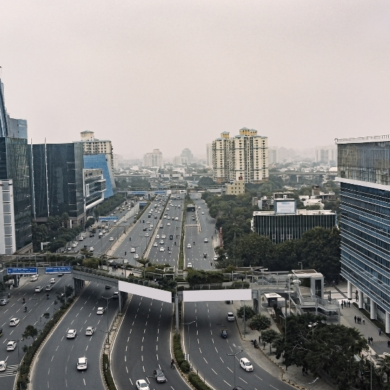
From tailored tax breaks to specialised housing loans, the landscape of homebuying in India offers a range of compelling benefits for women first-time homebuyers in India. These financial incentives are specifically designed to reduce the initial costs associated with purchasing a home and pave the way for long-term financial stability of women.
Stepping into the realm of homeownership is like beginning a new chapter in life, especially for women making this significant decision for the first time in life. It enhances their decision-making authority within the family and community, helping shift traditional gender roles. Additionally, the process of acquiring and managing property can boost a woman’s confidence and presence in financial and legal matters, encouraging further participation in areas traditionally dominated by men.
Navigating the complex world of real estate, loans, and legal paperwork can be daunting, and the financial aspect can often seem overwhelming. However, the landscape in India is increasingly being shaped by various supportive measures tailored specifically for women first-time homebuyers.
This blog is crafted to guide you through these advantages, offering insights and practical advice to make the most of these opportunities. Whether you are single, committed, married, or planning a family, understanding how these benefits can work for you will empower you to take informed decisions.
Table of Contents
7 Benefits for Women First-Time Homebuyers in India
In the following sections, we will dive into seven standout benefits that support women as they purchase their first home. These advantages not only make the dream more accessible but also promote independence and long-term stability, making now a great time for women to consider taking this significant step.
-
Lower Stamp Duty
In India, many states have implemented policies to encourage property ownership among women by offering reduced stamp duty rates when the property is registered in a woman’s name. This concession is typically 1% to 2% lower than the rates for men, depending on the state.
For example, in Karnataka, while the general stamp duty rate is about 3% to 5%, women may enjoy a slightly reduced rate, contributing to lower upfront costs for property registration. This type of policy is designed to make homeownership more accessible to women and encourage their financial independence & involvement in significant financial decisions.
This reduction in stamp duty lowers the initial cost of acquiring property and promotes gender equality in property ownership. The financial advantage can be substantial, especially for higher-value properties, resulting in savings of lakhs of rupees that can be allocated elsewhere, such as in-home improvements or savings for future needs.
-
Subsidies under Pradhan Mantri Awas Yojana (PMAY):
Pradhan Mantri Awas Yojana (PMAY) emphasises promoting home ownership among women, particularly in the economically weaker sections and lower-income groups. The eligibility criteria for women under this scheme include:
Nationality: The beneficiary must be an Indian citizen.Income Classification: Women from Economically Weaker Sections (EWS), Low-Income Groups (LIG), and Middle-Income Groups (MIG) – i.e. women with annual household income up to ₹18 lakh – are eligible.
Property Ownership: The beneficiary, or any family member, should not own a pucca house in any part of India.
First-time Homebuyer: The woman must be a first-time homebuyer.
Mandatory Female Ownership: At least one female household member must register the property.
PMAY provides different levels of subsidies based on the income category of the applicant:
Economically Weaker Section (EWS): Women whose annual household income is up to ₹3 lakh come under this category. They are eligible for an interest subsidy of 6.5% on a loan amount of up to ₹6 lakh.
Low-Income Group (LIG): For women with annual household income between ₹3 lakh and ₹6 lakh, the interest subsidy is also 6.5% on a loan amount of up to ₹6 lakh.
Middle-Income Group (MIG) I and II:
MIG I includes women with annual household incomes between ₹6 lakh and ₹12 lakh. They receive an interest subsidy of 4% on a loan amount of up to ₹9 lakh.
MIG II includes women with annual household incomes between ₹12 lakh and ₹18 lakh. They receive an interest subsidy of 3% on a loan amount of up to ₹12 lakh.
-
Tax benefits
Section 80C Deductions:
Women first-time homebuyers are eligible to claim a tax deduction of up to ₹1.5 lakh on the principal repayment of their home loan, under Section 80C of the Income Tax Act. This deduction also includes payments made towards stamp duty and registration charges, but only in the year these expenses are incurred.
Section 24 Deductions:
Women can claim deduction on the interest component of the home loan. For a self-occupied property, the maximum tax deduction available is ₹2 lakhs. For properties that are rented out, the entire amount of interest paid is deductible.
Section 80EE Deductions:
This section provides additional benefits for first-time homebuyers. Women who meet the criteria can claim an additional deduction of up to ₹50,000 for interest paid on their home loan. To qualify, the loan must have been sanctioned between April 1, 2016, and March 31, 2017, with the loan amount not exceeding ₹35 lakhs and the property value not exceeding ₹50 lakhs.
Section 80EEA Deductions:
Introduced to further incentivise affordable housing, Section 80EEA offers an additional deduction of up to ₹1.5 lakh on interest paid, over and above the deductions under Sections 24 and 80EE. This applies to loans sanctioned between April 1, 2019, and March 31, 2022, for properties costing up to ₹45 lakhs. The property must also meet certain carpet area conditions.
-
Lower Interest Rates on Home Loans
Financial institutions across India offer lower interest rates on home loans to women. Since home loans often extend to 25-30 years, these reduced rates can result in substantial savings for women, reducing the overall financial burden of purchasing a home.
HDFC Bank: Offers a slight reduction in home loan interest rates for women. This concession applies to salaried and self-employed women, with interest rates starting from 8.95% as of 2024.
Bank of Baroda: Provides competitive interest rates starting at 8.6% for women borrowers in 2024. They also offer a special processing fee rate during festive offers.
Axis Bank: Supports women borrowers by offering reduced rates starting at 8.6% for salaried and non-salaried women, reflecting their commitment to facilitating more accessible access to housing finance for women.
LIC Housing Finance (LIC HFL): Offers one of the lowest interest rates, starting at 8.65% p.a., coupled with minimal processing fees, making it an attractive option for women looking to finance their home purchases.
State Bank of India: SBI offers a concession on home loan interest rates for women, which is generally about 8.9% onwards. This concession is part of SBI’s Her Ghar scheme, aimed specifically at women homebuyers.
-
Empowerment and security
Empowerment through Ownership: Owning a home can be a transformative experience for women, as it often leads to greater autonomy and decision-making power within the household. This ownership helps in strengthening their position in both the family and society, marking a step towards gender equality by ensuring they have a stake in valuable assets.
Financial Security and Independence: Homeownership is a crucial step towards financial security, providing women with a substantial asset that appreciates over time. It represents a secure investment for the future, potentially yielding long-term financial benefits. This is especially important for women, who historically have had fewer opportunities to independently own properties.
Enhanced Credit Profile: Buying a home can improve a woman’s creditworthiness. Consistently meeting loan payments demonstrates financial reliability, which can enhance credit scores and provide better access to other forms of credit and financial products.
Stability for Family: Owning a home provides a stable and secure environment for children’s education and well-being. It creates a permanent base where families can flourish without the uncertainties of rented accommodations.
-
Joint Ownership Benefits
In the context of real estate, joint ownership refers to a property ownership model where two or more parties share title to a property. This can include spouses, family members, or even business partners. In India, joint ownership is especially beneficial for women first-time homebuyers for several reasons:
Enhanced Loan Eligibility and Better Terms: When women apply for a home loan as co-owners with their spouses or other family members, their combined incomes are considered by lenders. This can increase their overall loan eligibility, qualify them for larger loans, and secure more favourable loan terms and interest rates.
Legal and Succession Benefits: Joint ownership can simplify legal processes such as inheritance. In the event of the death of one owner, the property automatically passes to the surviving owner(s), which can prevent potential disputes and ensure smoother succession. This is particularly advantageous in protecting the rights of women in patriarchal setups.
Security and Empowerment: Owning property jointly with a spouse or other family member can give women greater security and bargaining power within and in broader societal contexts. It ensures they have legal claim and decision-making power over one of the major assets of the family.
Risk Mitigation: Joint ownership can mitigate risks associated with unexpected events, such as the death or incapacity of one partner. It ensures that the property management and loan responsibilities can be shared, reducing the financial burden on one individual.
-
Wider Societal Impact
Supporting women as first-time homebuyers in India has profound societal implications that extend beyond individual homeownership. When women own homes, it enhances their stature and decision-making capacity within their families, contributing to more balanced household dynamics.
This empowerment helps break down traditional barriers, offering a model for financial independence and stability that can inspire other women in their communities. Moreover, economically empowered women tend to reinvest in their families and communities, driving improvements in education and health.
9 Things to be Considered by Women First-Time Homebuyers
-
Eligibility for Benefits:
Verify eligibility for government schemes and benefits, which often offer advantages for women, including lower interest rates and subsidy benefits.
-
Credit Score:
Check and understand your credit score, as it significantly influences loan eligibility and interest rates. Maintaining a high credit score can result in more favourable loan conditions.
-
Property and Location:
Carefully select the location and type of property – considering factors such as safety, proximity to necessary amenities like hospitals, schools, and public transport, and potential for property value appreciation.
-
Budget and Affordability:
Establish a clear budget and stick to it. Consider all costs, including down payment, monthly instalments, property taxes, insurance, and maintenance expenses.
-
Loan Comparison:
Compare home loan options from different financial institutions. Look for special rates for women, compare processing fees, and thoroughly read the terms and conditions.
-
Legal Check on Property:
Ensure the property has clear titles and no legal issues. Hiring a legal expert to thoroughly scrutinise the property can prevent future complications.
-
Long-Term Financial Planning:
Assess your long-term financial commitments and how a home purchase fits into these plans. Ensure that buying a home is balanced with other significant financial goals.
-
Home Inspection:
Before finalising the purchase, invest in a thorough home inspection to check for structural integrity, quality of construction, and other potential issues that could require costly repairs later.
-
Documentation:
Ensure all the documents related to homebuying are in order, to protect your hard-earned money. If needed, consult a lawyer specialising in real estate, or a real estate consultant.
Conclusion
The pathway to homeownership for women in India is increasingly supported by policies designed to encourage economic independence and stability. For example, financial incentives like lower stamp duties and attractive loan rates, empowering benefits like enhanced eligibility for government schemes, and more.
These benefits not only make homeownership more accessible but also more appealing, providing women with tools to build their future on a foundation of security. Remember, the key to successfully navigating this path is to stay informed about your options, understand your rights, and seek advice when needed.
FAQs
1. What is the minimum income required for a woman to avail the benefits as a first-time homebuyer?
The minimum income required for a woman to avail the benefits as a first-time homebuyer depend on the specific scheme. Generally, the income limits for each PMAY category (EWS, LIG, MIG) are up to ₹3 lakh, ₹3 lakh - ₹6 lakh, and ₹6 lakh - ₹18 lakh respectively.
2. Can a single woman avail all the benefits mentioned?
Yes, a single woman can avail all the benefits mentioned if they meet the individual scheme's criteria.
3. What documents are needed to apply for the benefits?
The documents needed to apply for the benefits vary depending on the scheme. Generally, it is mandatory to have Govt ID proof, address proof, income proof, property documents, and bank statements. Specific schemes might have additional requirements.
4. Are there any specific banks offering the lowest interest rates for women borrowers?
Many banks offer low interest rates for women borrowers. Interest rates fluctuate over time, and it is advisable to compare loan options across various banks and lenders to get the best deal.
5. What are some challenges faced by women homebuyers in India?
Some challenges faced by women homebuyers in India are limited financial literacy, societal pressure, and lack of awareness about available benefits and schemes. Consulting financial advisors and leveraging support networks can help overcome these hurdles.
6. Where can I find more information and assistance?
You can find more information and assistance on the official websites of Pradhan Mantri Awas Yojana (PMAY), Ministry of Housing and Urban Affairs (MoHUA), and specific banks or lenders offering schemes for women homebuyers. Additionally, NGOs and online resources can provide valuable guidance and support.
7. What is the government subsidy for first-time home buyers in India for women?
The government subsidy for first-time homebuyers in India for women, depends on your income category and loan amount. Women from Economically Weaker Section (EWS) can receive up to ₹2.67 lakh for loans as large as ₹12 lakhs. Those in the Low-Income Group (LIG) are eligible for up to ₹2.35 lakh on loans up to ₹9 lakhs. Middle-Income Group I can receive a 4% subsidy on loans up to ₹9 lakhs for annual household incomes between ₹6-12 lakh, while Middle-Income Group 2 can receive a 3% subsidy on loans up to ₹12 lakhs for annual household incomes between ₹12-18 lakh.
8. What are the benefits for women first-time home buyers in India?
The benefits for women first-time homebuyers in India are additional stamp duty concessions that vary by state, significant income tax deductions of up to ₹1.5 lakh deductible on principal repayments under Section 80C, an additional ₹50,000 for interest repayment under Section 80EE, lower loan interest rates under government-backed schemes. Also, joint ownership with a spouse or family members enhances loan eligibility and improves affordability, making home buying more accessible to women.
9. What is the first-time home buyer grant in India?
Currently, there is no first-time home buyer grant in India. However, the PMAY subsidy acts as a form of grant, reducing the financial burden for eligible buyers.
10. What is the tax benefit of home loan for women?
The tax benefit of home loan for women are ₹1.5 lakh under Section 80EEA, and additional deduction of ₹50,000 on interest repayment under Section 80EE. Eligibility criteria and specific benefits may vary depending on income categories, location, and specific schemes. It is recommended to consult the official websites of PMAY, Ministry of Housing and Urban Affairs (MoHUA), and relevant banks / lenders for detailed information and the latest updates.














